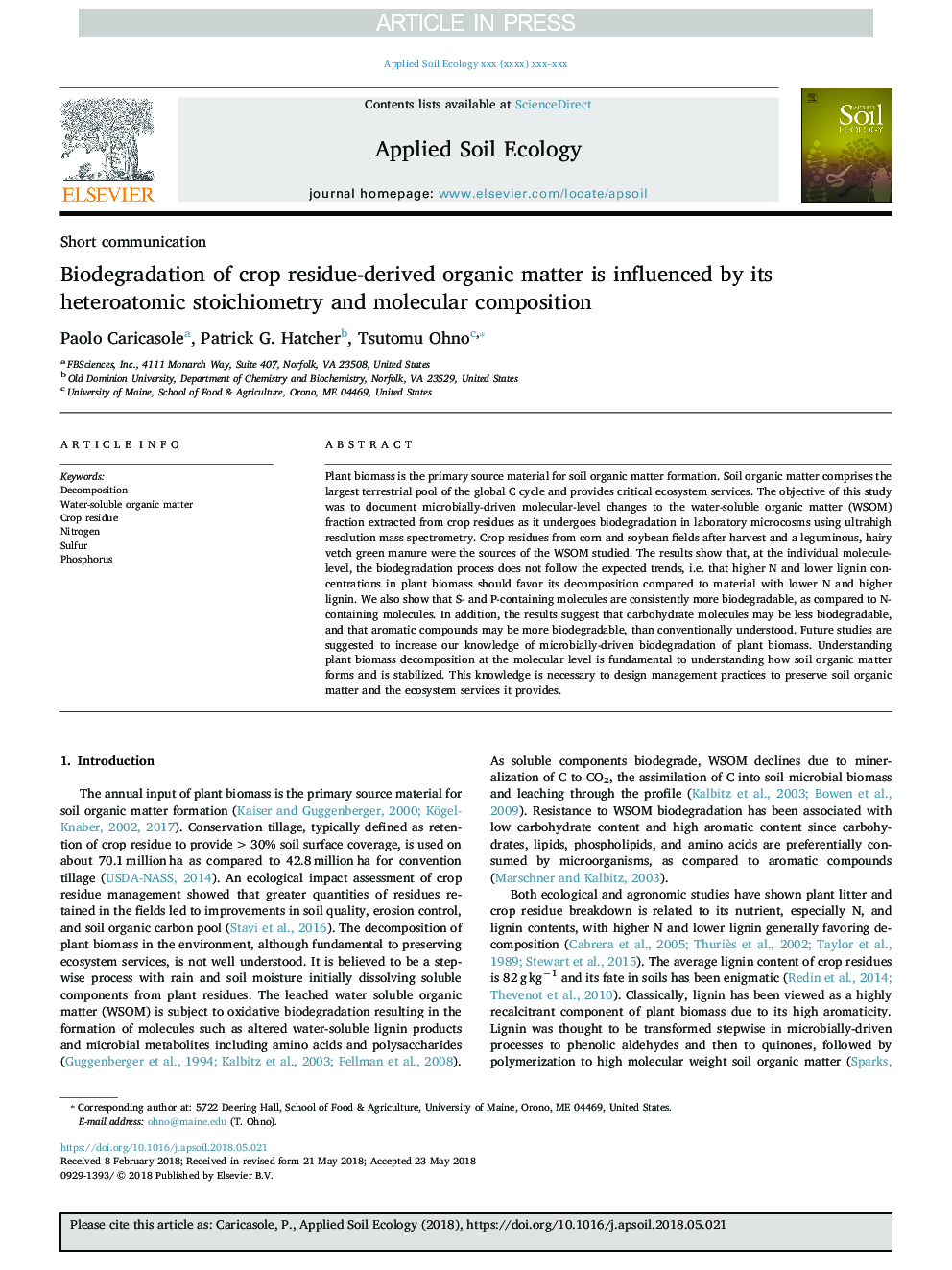| Article ID | Journal | Published Year | Pages | File Type |
|---|---|---|---|---|
| 8846566 | Applied Soil Ecology | 2018 | 5 Pages |
Abstract
Plant biomass is the primary source material for soil organic matter formation. Soil organic matter comprises the largest terrestrial pool of the global C cycle and provides critical ecosystem services. The objective of this study was to document microbially-driven molecular-level changes to the water-soluble organic matter (WSOM) fraction extracted from crop residues as it undergoes biodegradation in laboratory microcosms using ultrahigh resolution mass spectrometry. Crop residues from corn and soybean fields after harvest and a leguminous, hairy vetch green manure were the sources of the WSOM studied. The results show that, at the individual molecule-level, the biodegradation process does not follow the expected trends, i.e. that higher N and lower lignin concentrations in plant biomass should favor its decomposition compared to material with lower N and higher lignin. We also show that S- and P-containing molecules are consistently more biodegradable, as compared to N-containing molecules. In addition, the results suggest that carbohydrate molecules may be less biodegradable, and that aromatic compounds may be more biodegradable, than conventionally understood. Future studies are suggested to increase our knowledge of microbially-driven biodegradation of plant biomass. Understanding plant biomass decomposition at the molecular level is fundamental to understanding how soil organic matter forms and is stabilized. This knowledge is necessary to design management practices to preserve soil organic matter and the ecosystem services it provides.
Related Topics
Life Sciences
Agricultural and Biological Sciences
Ecology, Evolution, Behavior and Systematics
Authors
Paolo Caricasole, Patrick G. Hatcher, Tsutomu Ohno,
